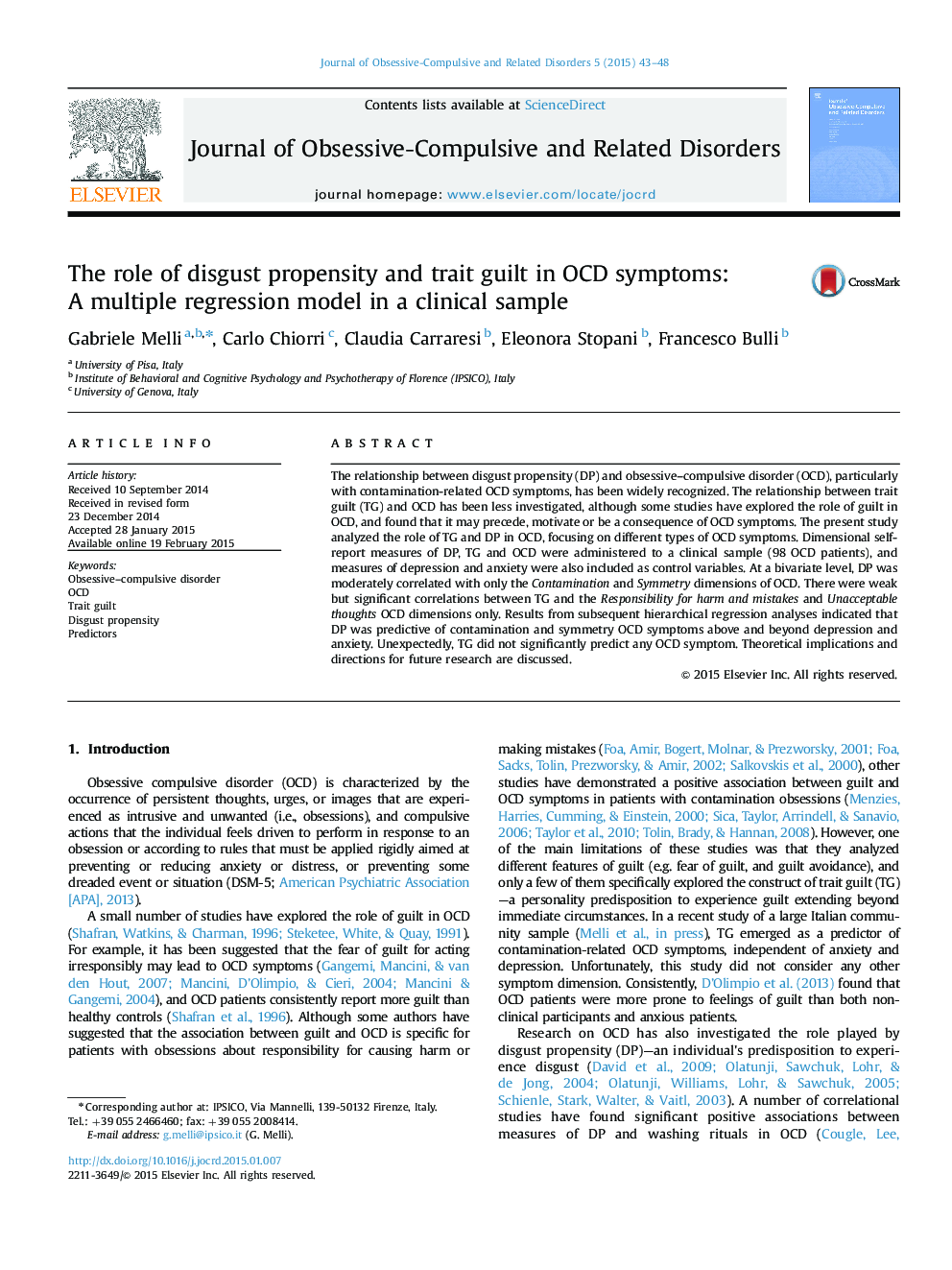| Article ID | Journal | Published Year | Pages | File Type |
|---|---|---|---|---|
| 912283 | Journal of Obsessive-Compulsive and Related Disorders | 2015 | 6 Pages |
•The relationship between disgust propensity (DP) and OCD has been widely recognized.•The relationship between trait guilt (TG) and OCD has been less investigated.•The present study analyzed the role of TG and DP in OCD symptoms.•As expected, DP was predictive of contamination and symmetry OCD symptoms.•Unexpectedly, TG did not predict any OCD symptoms.
The relationship between disgust propensity (DP) and obsessive–compulsive disorder (OCD), particularly with contamination-related OCD symptoms, has been widely recognized. The relationship between trait guilt (TG) and OCD has been less investigated, although some studies have explored the role of guilt in OCD, and found that it may precede, motivate or be a consequence of OCD symptoms. The present study analyzed the role of TG and DP in OCD, focusing on different types of OCD symptoms. Dimensional self-report measures of DP, TG and OCD were administered to a clinical sample (98 OCD patients), and measures of depression and anxiety were also included as control variables. At a bivariate level, DP was moderately correlated with only the Contamination and Symmetry dimensions of OCD. There were weak but significant correlations between TG and the Responsibility for harm and mistakes and Unacceptable thoughts OCD dimensions only. Results from subsequent hierarchical regression analyses indicated that DP was predictive of contamination and symmetry OCD symptoms above and beyond depression and anxiety. Unexpectedly, TG did not significantly predict any OCD symptom. Theoretical implications and directions for future research are discussed.
